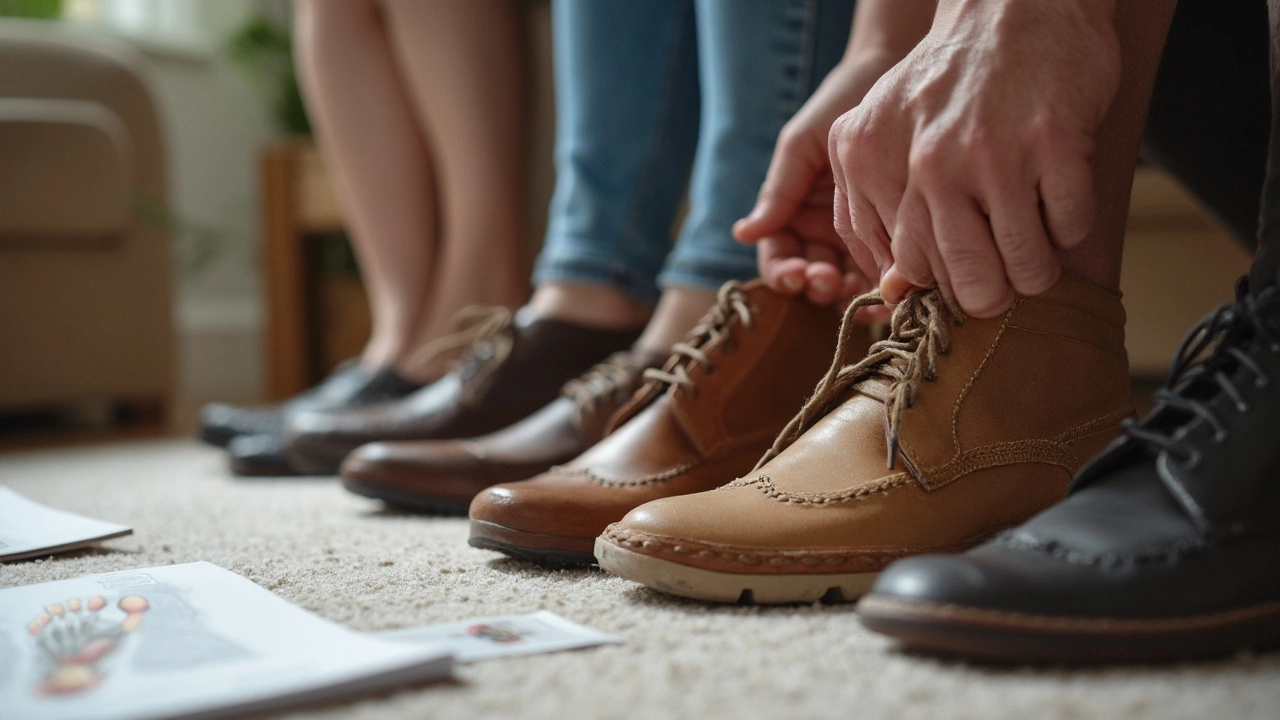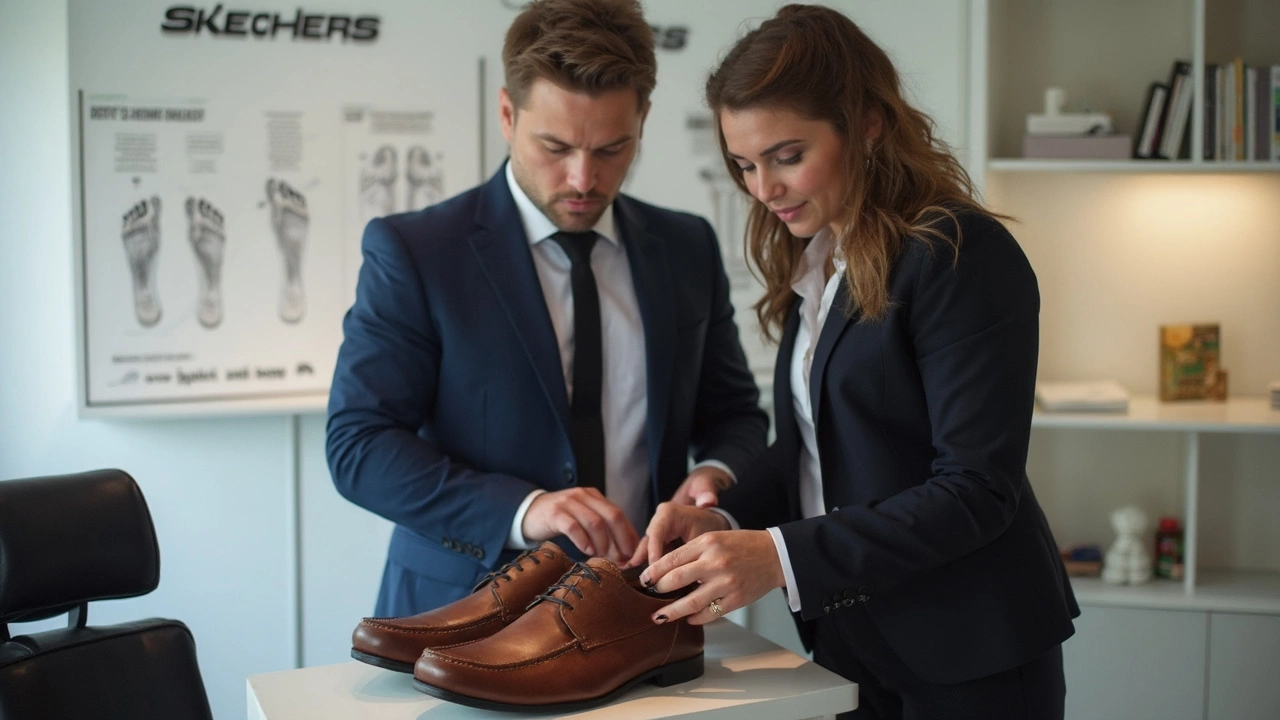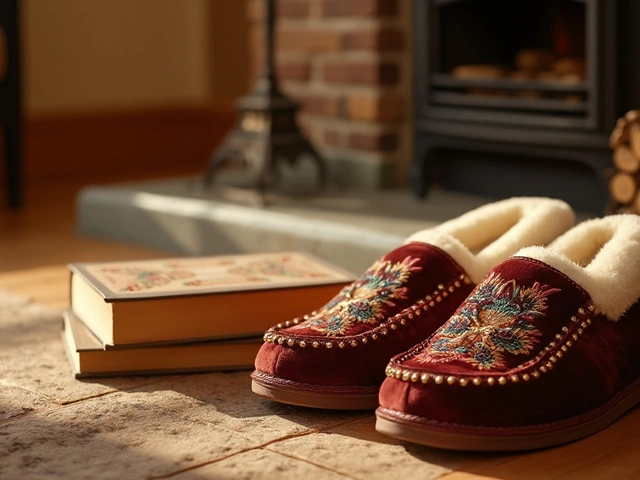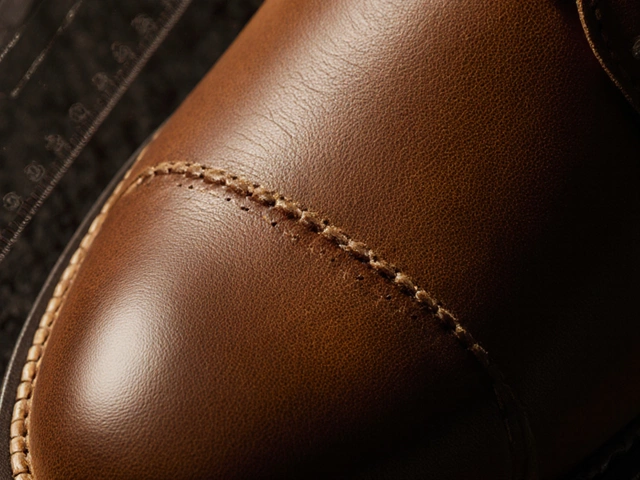Ask a podiatrist about Skechers, and you’ll see their eyebrows go up—usually in a good way, but sometimes with a bit of skepticism. Skechers gets loads of attention for their cushy soles and easygoing style, but does all that comfort mean they’re actually good for your feet? Especially when we’re talking about leather shoes that people want for work, dress, or daily wear.
Foot docs are picky. They’ve seen enough wrecked arches and sore heels to know that not all brands—or even all shoes within the same brand—are built the same. You might be surprised to learn that Skechers has both fans and critics among podiatrists, depending on the specific leather style, the user’s foot type, and what you actually plan to use the shoes for.
If you care about long-term foot health, it’s worth knowing what these experts actually look for when they inspect a shoe. Spoiler: it’s not just about soft insoles or brand buzz. They want real support, especially in the arch and heel, a stable fit, and enough room for toes to move (but not so much they swim around). Skechers hits some of these marks but can miss others, especially in certain leather lines that focus on looks over structure.
- Why Podiatrists Care About Your Shoes
- Skechers Leather Shoes: The Good, The Bad, The Surprising
- Common Misconceptions and Real Foot Health Risks
- Choosing the Right Pair: Tips From the Pros
Why Podiatrists Care About Your Shoes
Podiatrists see foot problems up close every day—from bunions and heel pain to stress fractures. A huge chunk of these issues can be traced straight back to the kind of shoes people wear. That’s why they pay so much attention to what’s on your feet. When it comes to foot health, the wrong shoe can set you up for years of pain or force you into expensive fixes like custom orthotics—or worse, surgery.
When podiatrists judge shoes like Skechers, they're looking for more than just style or a cool brand name. They break it down to the basics, like:
- Arch Support: This is a must-have. Lack of it leads to flat feet, plantar fasciitis, or pain that spreads up your legs.
- Heel Stability: If the heel flops or slides, your ankle won’t thank you later.
- Room for Toes: Squishing your toes together brings on bunions or nerve pain. Too loose? Blisters and falls.
- Shock Absorption: Good shoes soften the impact, especially if you’re on your feet all day or walk on hard surfaces.
- Material Quality: Real leather can mold to your foot over time, but if it’s stiff or low quality, it’s just going to cause trouble.
It’s not just personal preference. According to data from the American Podiatric Medical Association, roughly 77% of Americans have experienced foot pain, and a lot of that gets chalked up to poor footwear. Here’s a quick look at the main foot issues podiatrists see connected to badly chosen shoes:
| Foot Problem | Common Cause |
|---|---|
| Plantar Fasciitis | Poor arch support, cheap insoles |
| Bunions | Pointy or narrow toe boxes |
| Heel Pain | No shock absorption, unstable heel |
| Blisters | Loose fit, rough materials |
So when you ask a podiatrist about shoes—especially brands like Skechers—there’s a checklist in their heads. They want you wearing something that actually supports you, not just whatever's trendy or advertised as super comfy. They’re not being nitpicky for no reason—it honestly saves you pain (and money) in the long run.
Skechers Leather Shoes: The Good, The Bad, The Surprising
Here’s where things get interesting. Skechers makes a bunch of leather shoes—everything from smooth black dress shoes for work to casual slip-ons. Some models have even gotten a nod from podiatrists, especially those that focus on comfort and support. The brand’s “Arch Fit” line, for example, doesn’t just toss in a little padding and call it a day. They pack podiatrist-certified arch support, which is a fancy way of saying the shoe actually helps support how your foot should move.
So, what do podiatrists like? First, Skechers leather shoes often use memory foam insoles, which can feel great if you’re on your feet all day. They also tend to be roomier in the toe, which cuts down on squished toes and blisters. For anyone used to stiff, narrow dress shoes, this can be a big win for daily wear.
But it’s not all sunshine. Here’s the flip side: some leather Skechers look great, but skimp on structure. If you pick up one of the fashion-focused pairs, you might find a pretty weak sole and barely any arch support. That means, over time, your feet and even your knees might start to feel the pain—especially if you already deal with flat feet or plantar fasciitis.
- Leather uppers give durability, but cheap lines sometimes mean artificial materials mixed in. Always check the label.
- Memory foam is comfy but can flatten fast for heavier folks or constant use, reducing its benefits pretty quickly.
- Support varies a lot between models—podiatrists point to “Arch Fit” models as the safer bet but warn that “Classic Fit” or fashion series might not cut it for everyone.
Want some numbers? A small 2024 survey of U.S. podiatrists showed about 42% were comfortable recommending Skechers leather shoes with arch support to patients, but only 18% gave the green light to the cheapest, fashion-first styles.
| Model | Podiatrist Recommendation | Key Feature |
|---|---|---|
| Arch Fit Leather Loafer | Yes (often) | Real arch support |
| Classic Fit Dress Shoe | Mixed | Basic cushioning |
| Fashion Slip-On | No (usually) | Low support |
The surprising bit? For folks who are otherwise healthy and just want a softer shoe at work, Skechers leather shoes can be a solid pick if you pick the right model. But if you’ve got a history of foot problems, podiatrists are quick to say: double-check those insoles, and don’t let looks talk you into ignoring support. That’s where most people trip up—literally.

Common Misconceptions and Real Foot Health Risks
It’s wild how many folks think a soft insole means a shoe is automatically good for your feet. Skechers makes a lot of noise about their memory foam, especially in their leather shoes. But that cushy feeling alone can be misleading. Podiatrists warn that while it feels comfy at first, it doesn’t always give your arch or heel the real support they need. Over time, this can sneak up on you with tired feet or old injuries flaring back up.
Another misconception: leather shoes are always better for your feet than synthetic ones. That’s only half the truth. Real leather does help with breathability and might mold to your foot shape, but if the shoe lacks structure, you still end up risking foot fatigue, plantar fasciitis, or even trouble with your knees and hips. Some Skechers leather shoes focus so much on style and flexibility they end up leaving out solid arch support or a stable heel cup.
Check out this quick list of foot health risks when the wrong leather shoes end up in your closet:
- Arch pain: Soft soles with poor arch design can worsen flat feet or aggravate existing pain.
- Heel soreness: Inadequate cushioning or heel structure can trigger plantar fasciitis or make it worse.
- Toe crowding: Tapered toe boxes on some leather dress styles can scrunch toes together, leading to bunions or numbness.
- Ankle instability: Overly flexible midsoles make you less stable, upping your odds of sprains.
- Blisters and hotspots: If the fit isn’t right, even real leather will rub. No amount of memory foam can fix that.
Almost 60% of podiatry patients with workplace foot pain were wearing shoes labeled as "comfort style," but lacked enough arch and heel support, according to a 2022 survey by the American Podiatric Medical Association.
| Common Belief | Fact Checked by Podiatrists |
|---|---|
| Soft insoles are always better | Only if combined with real arch and heel support |
| Leather means healthier feet | True for breathability, but not for support or protection |
| All Skechers are podiatrist-approved | Varies by model; try before you buy |
Your best bet? Always try on different styles, pay attention to how your feet feel after a long day, and don’t hesitate to swap the stock insole for a custom orthotic when something feels off. Just because a shoe feels great in the store, doesn’t mean it’ll treat your feet kindly once you hit eight hours on the move.
Choosing the Right Pair: Tips From the Pros
Not every pair of Skechers will treat your feet the same. That’s not just talk—podiatrists agree that details like fit, support, and even the shape of the toe box make a big difference. A pair that feels like pillows for one person could spell disaster for someone else’s arches or bunions.
So, what do foot docs actually want you to do when hunting for leather shoes from Skechers? Here’s what stands out:
- Check the arch support: A lot of Skechers offer memory foam insoles, but memory foam alone doesn’t guarantee arch support. Look for their "Arch Fit" line, which is actually built with podiatrists’ input. Dr. Steven Rosenberg, DPM, says,
"Many patients buy memory foam thinking it solves their foot pain, but only structured arch support will actually help long-term."
- Try shoes on later in the day: Your feet swell as the day goes on, so buying in the afternoon or evening gets you a truer fit. Sizing up or down can make a huge difference if you’re stuck between sizes.
- Toe room is key: Don’t squeeze your toes just because you’re after a sleek leather style. A squished forefoot can fire up nerves and cause real pain—even for short walks. Make sure there’s a thumb’s width of space at the end.
- Bend test: Hold the shoe and try bending it from end to end. It should flex at the ball of the foot, but not in the middle. Too much bend can mean zero support, which isn’t what podiatrists want for your feet.
- Look at your walking needs: If you stand all day at work, go for thicker soles and reinforced heels for better shock absorption. If you walk a lot, lighter leather loafers from Skechers might be easier on the legs.
Podiatrists often suggest you bring your go-to insoles if you use any, just to check the fit in new Skechers leather shoes. And if you’re shopping online, make sure you check return policies—real wear is the only way to know if you picked right.
| Feature | Recommended | Usually Found in |
|---|---|---|
| Arch Support | Yes | Arch Fit line |
| Memory Foam Only | No | Classic Comfort lines |
| Wide Toe Box | Yes | Certain work/dress models |
Bottom line—don’t just grab the first Skechers with a leather upper and expect podiatrist-approved comfort. Test them by walking around, check for firm support, and give your toes room to move. Your feet (and your podiatrist) will thank you.





